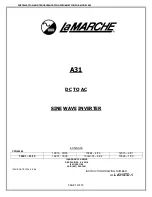
Syncing Trouble-Shooting
If you are having trouble syncing to SMPTE you should check the fol-
lowing:
Are you using a high quality tape deck and tape? Have you tried using
a higher quality Metal or Chrome Tape?
Do you have the BiPort 2x4s SMPTE In connected to the proper Tape
Out/Sync Out port of your deck?
Are your SMPTE audio cables good?
Have you discovered the best Input and Output level settings on your
tape deck? You may need to spend some time playing with different
playback and record levels to find the best and most reliable settings. If
the signal is too hot or too low during record or playback you may
encounter problems. You should play with the record and playback lev-
els until you get reliable sync. We have found that a level of around -10
dB is best.
A SMPTE stripe is essentially data recorded to tape. If your recorder
uses noise reduction, such as DBX or Dolby, when writing or reading
SMPTE, the data may be corrupted and the results may be unacceptable.
We recommend that you do NOT use noise reduction when recording or
playing a SMPTE sync track.
If you are recording any kind of a sync stripe and going through a mix-
ing board to set levels, make sure any EQ is off or flat. If you EQ a
SMPTE signal it may turn to mush. Also, try to avoid the bussing sys-
tem by using direct outputs.
Are you trying to use SMPTE mode with a sequencer that does not sup-
port MTC or is not set to chase to MIDI Time Code?
With all sequencers you must set a SMPTE song/sequence start time.
Make sure you set this SMPTE start time to a value at least a couple sec-
onds later than what your SMPTE stripe starts at. For example, if you
recorded a SMPTE stripe starting at 1 hour (01:00:00:00), you should set
your sequencer start time to something like 1 hour and 5 seconds
(01:00:05:00).
46



































